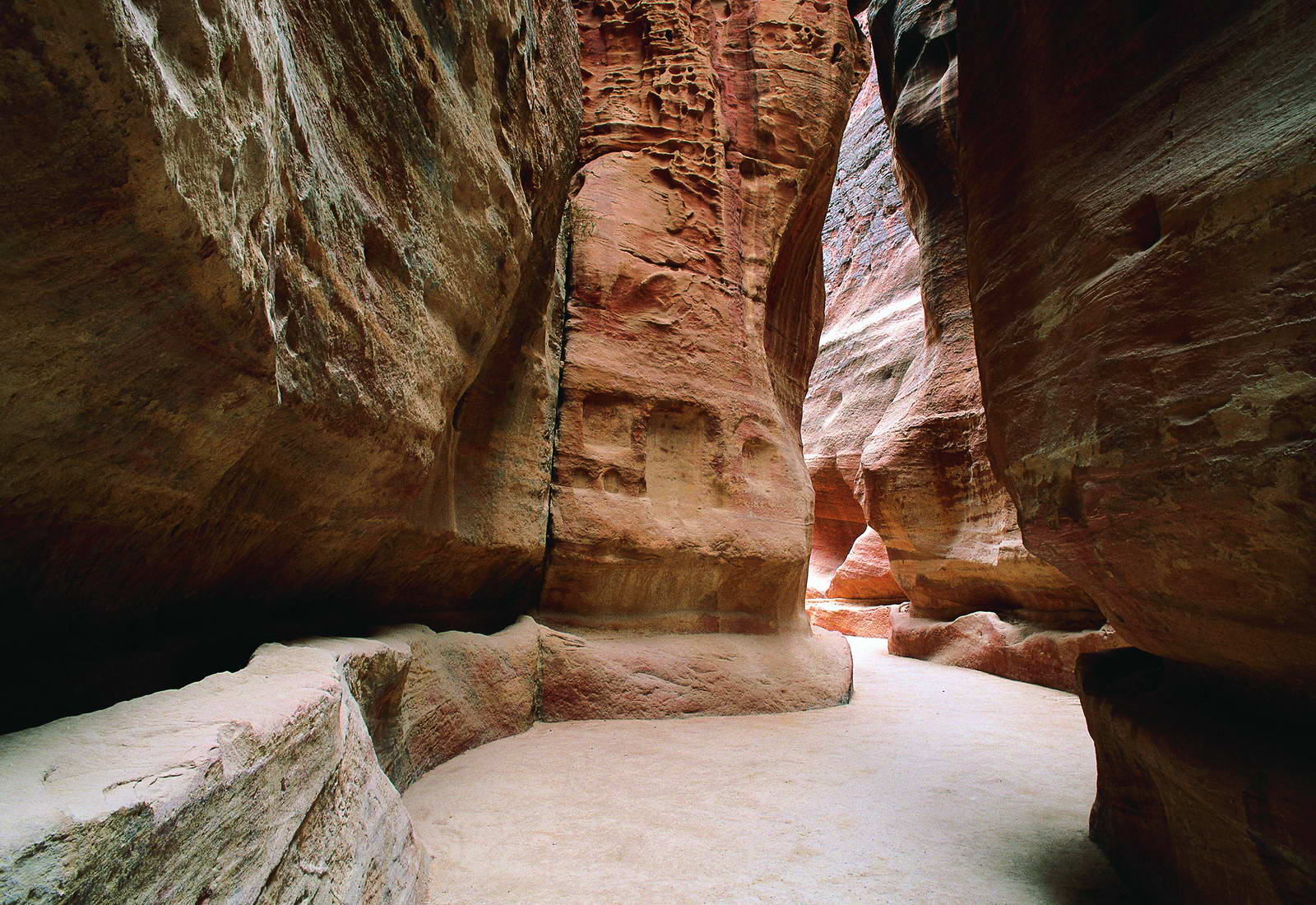The Nabataeans were people of innovation and technology. Many clear evidences were left behind them that prove this fact. Unfortunately for a site like Petra, visited by crowds of visitors and tourists every day,
many major elements need to be strengthened in terms of interpretation and presentation techniques in order to reflect the unique and genuine aspects of the place.
The major elements that need to be changed include: un-authorized tour guides, insufficient interpretation site information in terms of quality and display. In spite of Jordan‘s numerous archaeological sites (especially Petra) within the international standards, legislations and conventions that discuss intensively interpretation and presentation guidelines for archaeological site in a country like Jordan, it is not easy to implement these standards in Petra at present for several reasons which include: presence of different stakeholders, lack of funding, local community. Moreover, many interpretation and development plans were previously made for Petra, which makes it harder to determine the starting point.
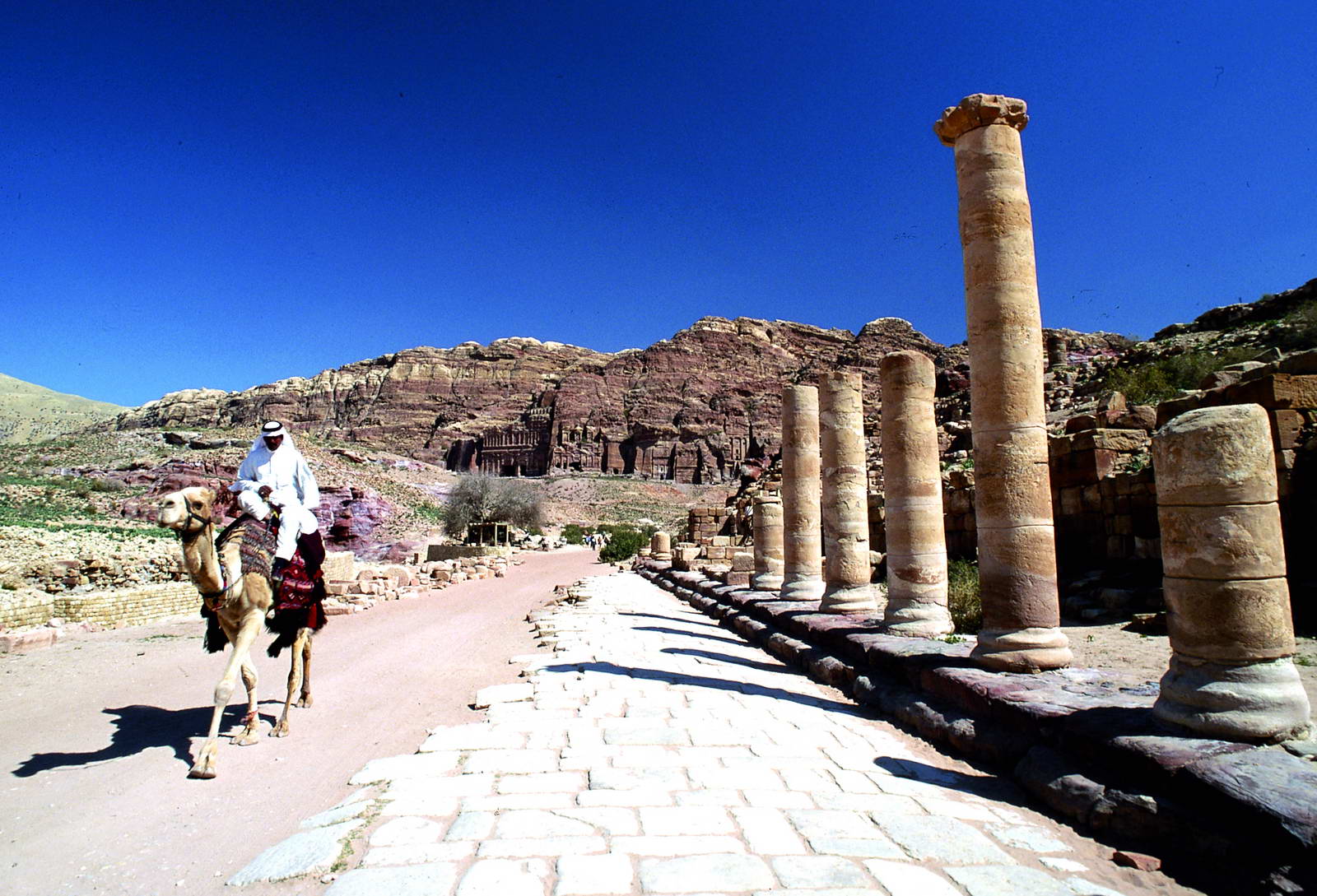
Within the work I did, I proposed two ideas for developing interpretation technique in Petra. First was using the theme technique, which creates a story from the site or from innovations done by the inhabitants, and to be presented to visitors in a modern approach. The purpose of this story is to link the visitor to the site emotionally, by providing them with the sense and feel of the site‘s real events by that time together with a good amount of information that gives the visitor the chance to live and feel an unforgettable experience of the place. The second idea was how to tailor a useful interpretation plan that could be implemented on all other archaeological sites in Jordan right after ―evaluating the results of its implementation in Petra‖.
The aim of this thesis is to develop interpretation criteria for ―local governments and nongovernmental organizations‖, as well as an interpretation plan in a Jordanian context and apply them on all other archaeological sites in Jordan.
Tourists would benefit from the quality of interpretation services offered by the interpreters and the techniques of presentation available on the site, in addition to tour guides who have received training programs derivate from this study, which would guarantee in return a more sustainable tourism movement to the site of Petra in the future.
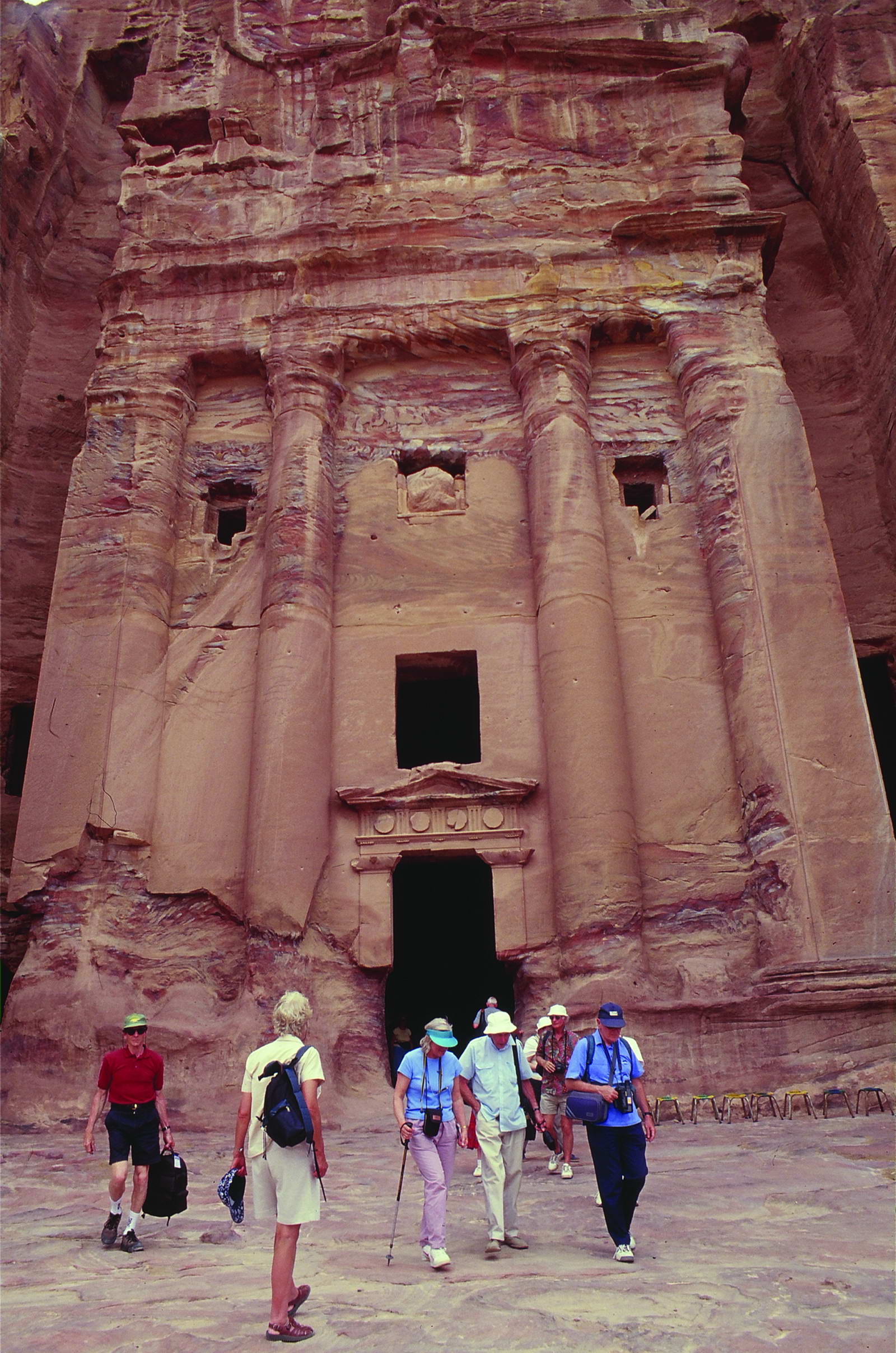
Abstract
The Nabataeans were people of innovation and technology. Many clear evidences were left behind them that prove this fact. Unfortunately for a site like Petra, visited by crowds of visitors and tourists every day, many major elements need to be strengthened in terms of interpretation and presentation techniques in order to reflect the unique and genuine aspects of the place. The major elements that need to be changed include: un-authorized tour guides, insufficient interpretation site information in terms of quality and display.
In spite of Jordan‘s numerous archaeological sites (especially Petra) within the international standards, legislations and conventions that discuss intensively interpretation and presentation guidelines for archaeological site in a country like Jordan, it is not easy to implement these standards in Petra at present for several reasons which include: presence of different stakeholders, lack of funding, local community. Moreover, many interpretation and development plans were previously made for Petra, which makes it harder to determine the starting point.
Within the work I did, I proposed two ideas for developing interpretation technique in Petra. First was using the theme technique, which creates a story from the site or from innovations done by the inhabitants, and to be presented to visitors in a modern approach. The purpose of this story is to link the visitor to the site emotionally, by providing them with the sense and feel of the site‘s real events by that time together with a good amount of information that gives the visitor the chance to live and feel an unforgettable experience of the place. The second idea was how to tailor a useful interpretation plan that could be implemented on all other archaeological sites in Jordan right after ―evaluating the results of its implementation in Petra‖.
The aim of this thesis is to develop interpretation criteria for ―local governments and nongovernmental organizations‖, as well as an interpretation plan in a Jordanian context and apply them on all other archaeological sites in Jordan.
Tourists would benefit from the quality of interpretation services offered by the interpreters and the techniques of presentation available on the site, in addition to tour guides who have received training programs derivate from this study, which would guarantee in return a more sustainable tourism movement to the site of Petra in the future. III
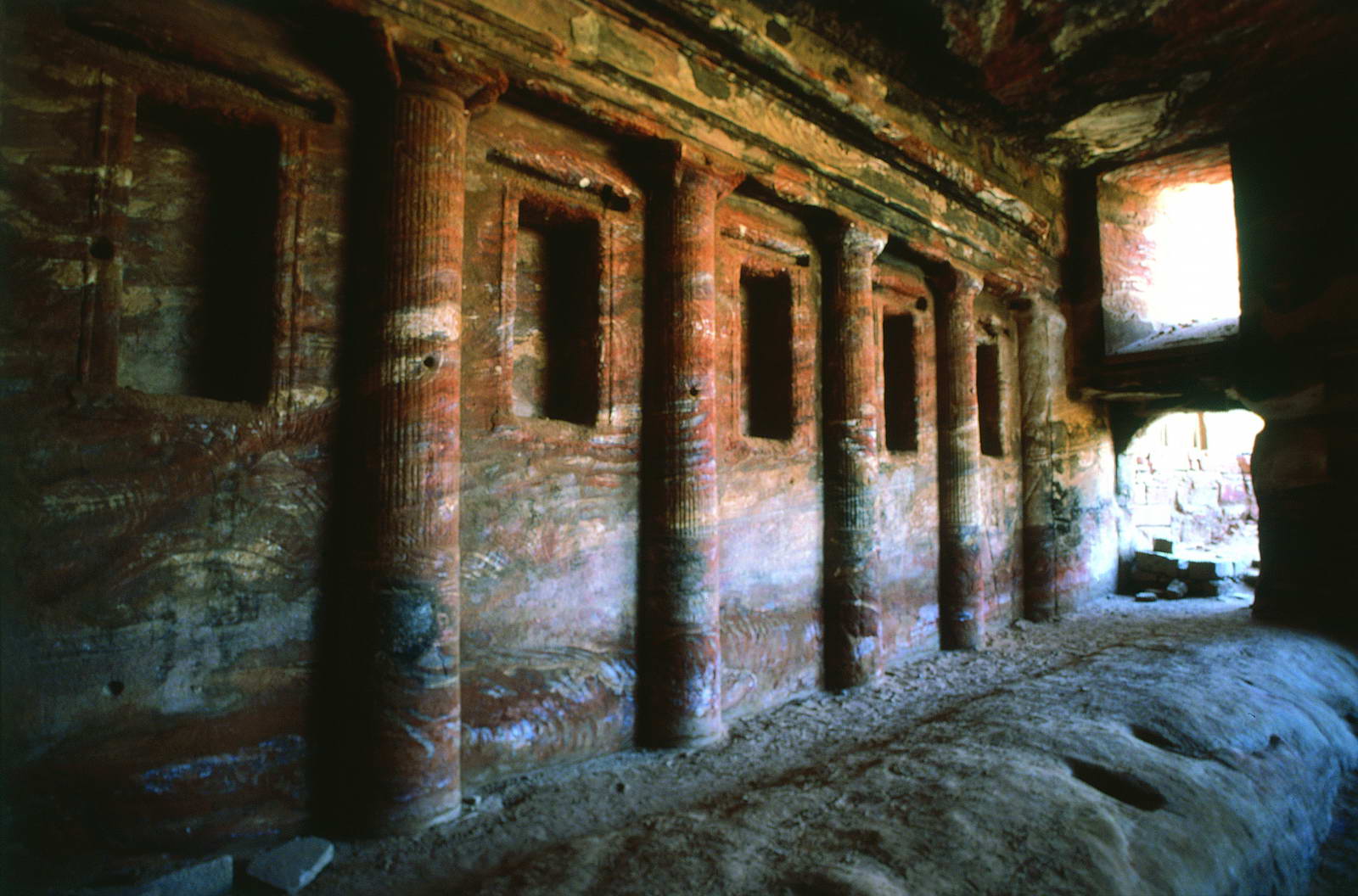
Introduction
In 1985, Petra became recognized as a UNESCO World Heritage Site in recognition of its unique cultural and natural heritage. This imposes on Jordan a task to protect it and preserve it for several reasons such as: enjoyment, scholarship, and pride of next generations. Previously, in 1968, Petra had been recognized by the government and contributing agencies as an outstanding example of human heritage, and the United States National Park Service (NPS) was invited to prepare a comprehensive plan to manage the site. This plan was used as a guide for its development, interpretation, protection, and general administration. (NPS plan: 1968: 134)
On July 7th 2007, Petra confirmed its fame by becoming one of the New Seven Wonders of the World in a worldwide vote. This recognition generated a huge increase in tourism which has been coupled with the deficiency of effective planning and management (Tables 1 - 5). The urgent challenge is an all-out effort to protect, upgrade, and promote Petra effectively while usefully engaging local communities to sustainably develop the local economy.
In August 2007, PAP (Petra Archaeological Park) Council was given administrative and financial independence with the passage of the PAP Council regulation delegating park management to it. This is still awaiting institutional development to become fully operational.
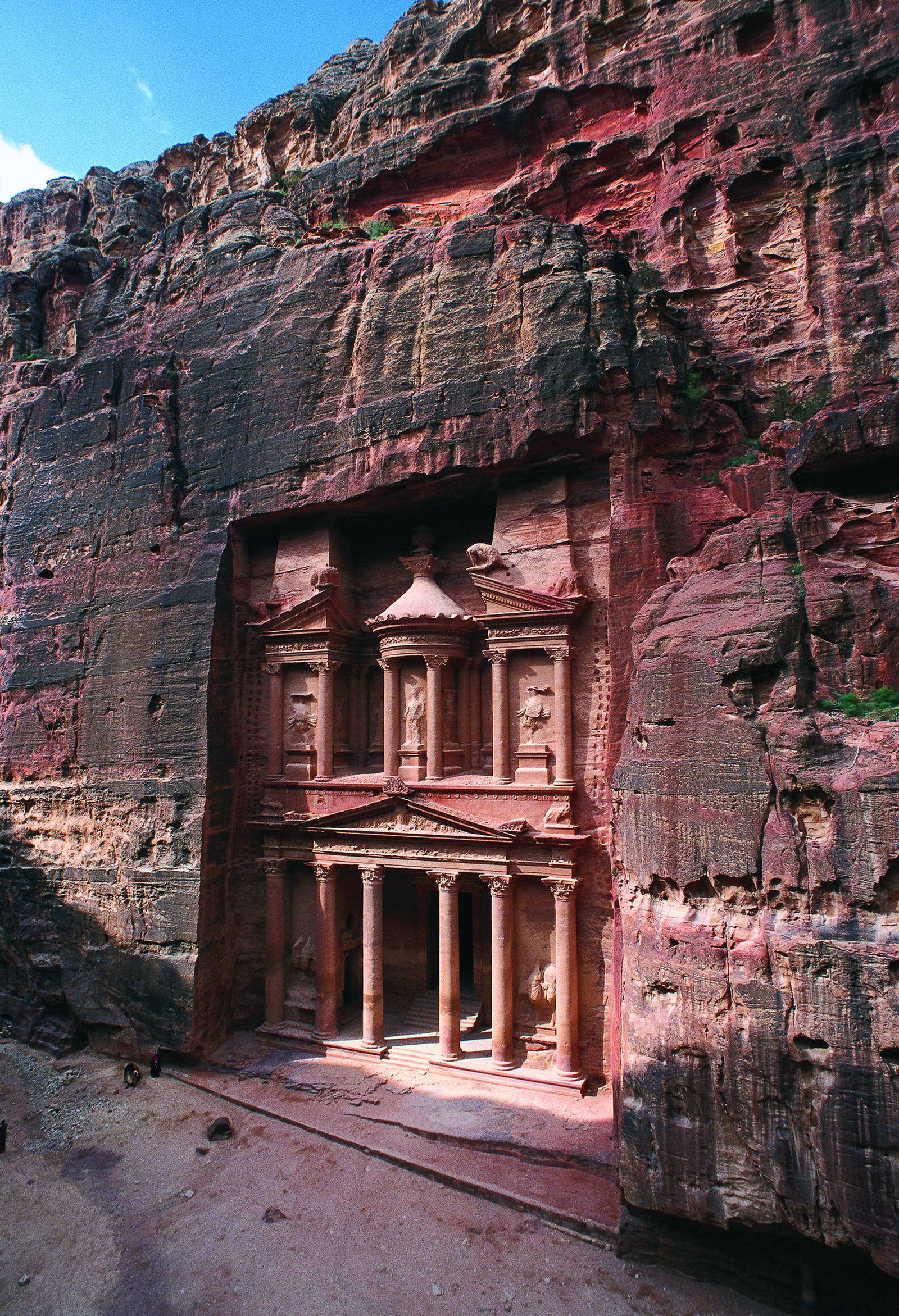
It is generally noticed that conservation, interpretation and presentation of the site of Petra have not been given proper attention despite all the efforts made by the concerned national and international bodies.
Heritage conservation seeks to sustain the values of heritage landscapes, places and objects, individually and collectively, so that the community and visitors can continue to appreciate, experience and learn from them and about them, so that they can be passed on to future generations (Interpretation Policy2005: 4). Heritage interpretation is a means of sharing history and culture with other communities, new citizens, visitors, and people overseas. It is also a means of passing on the knowledge of Jordanian history, culture and values to new generations (Interpretation Policy 2005: 4). The story of the site has not yet been fully pieced together as various aspects about the ancient cultures which dominated the site have yet to be fully learned.
Therefore, the objective of this research project is:
- To fill in the gaps in interpretation and presentation techniques for cultural heritage in Jordan, taking Petra as a case study, Interpretation and presentation plans for cultural heritage in Jordan are lacking.
- To establish a general interpretation criteria for Jordan and specific criteria for various potential sites.
The following issues have been covered in this study:
1. The definition of interpretation and presentation archaeology.
2. The theoretical basis for archaeological interpretation and presentation.
3. The role of archaeological and heritage interpretation in developing tourism in Jordan.
Being a Jordanian citizen, I have had the chance to compare the level of interpretation and presentation between the different archaeological sites in Jordan. This allowed me to conclude that the principles of archaeological interpretation have not been used in the right way.
This comparison has raised questions related to the interpretation and presentation situation in Jordan‘s cultural heritage:
- What are the themes that could be addressed through interpretation and presentation in Petra?
- Why should we start enhancing the interpretation and presentation methodology in Jordan and Petra?
- What is the relationship between interpretation and sustainable tourism?
- Can interpretation and presentation help solve some management issues?
Unfortunately, very few published books exist on archaeological interpretation and presentation. This made the development of this thesis more challenging.Tourism is a critical industry in Jordan. The country is implementing plans to enhance the quantity and quality of its visitors. Jordan has a large number of highly significant cultural heritage sites. The Ministry of Tourism and Antiquities (MoTA) and the Department of Antiquities (DOA) are striving to improve the quality of visitation while preserving cultural heritage sites for the future (Tables 1 - 5). Improving interpretation at the sites is one way to accomplish this. In economic terms interpretation develops a high-quality product making visitation highly attractive and of a greater value. For the people of Jordan, interpretation allows a better understanding and appreciation of their own heritage. This helps in building a protection for the sites in the future. And actually, Jordan archeological sites needs to achieve both goals.
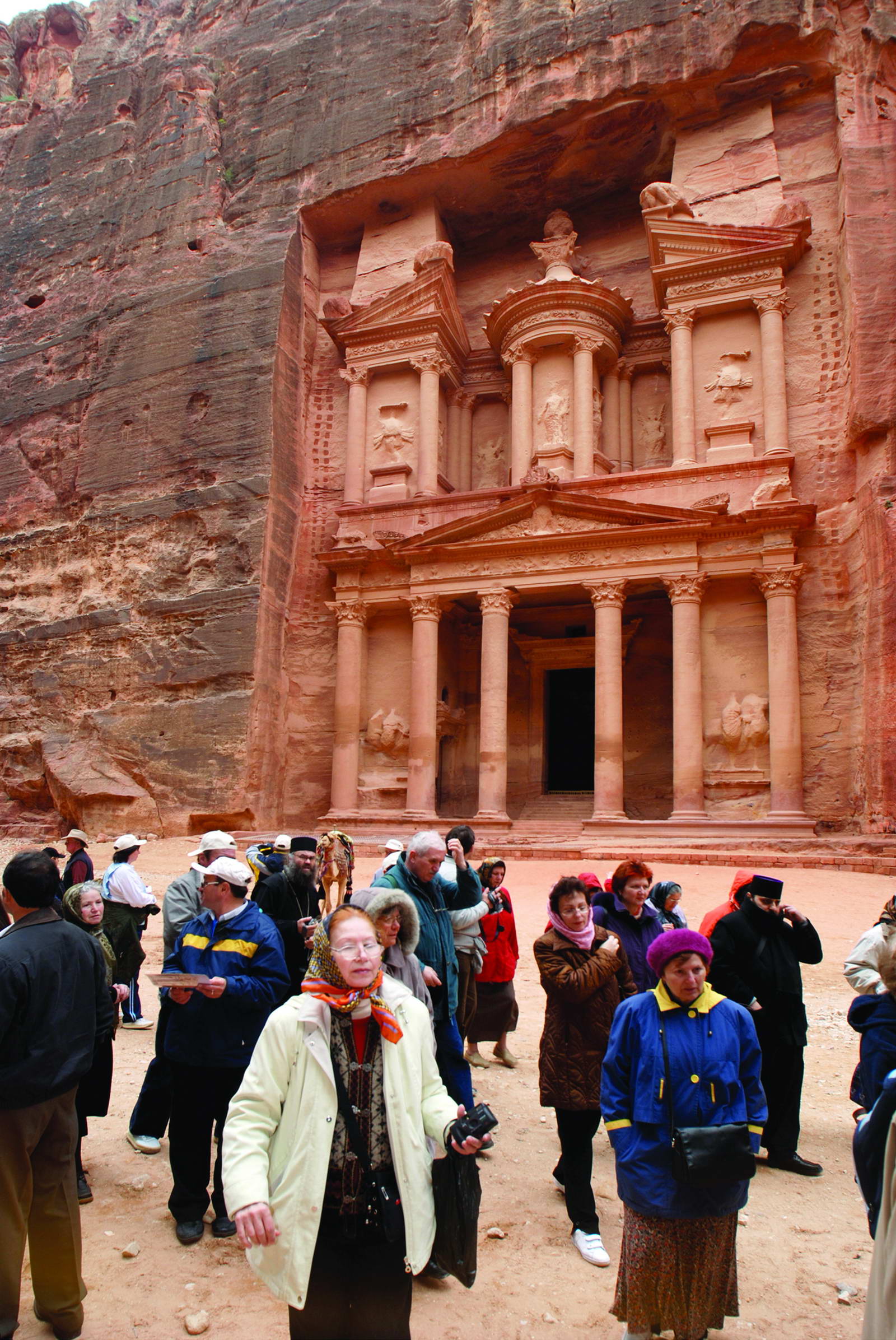
Successful Interpretation of archaeology and heritage is one of the main reasons for visiting an archaeological site, and its the key element in any heritage tourism site development. That‘s why a heritage site can never reach its potential without having an interpretation plan, programs and services (Tamwoy 2007: 42).
Through interpretation the general public can be made aware of the scientific and historical values of key archaeological resources at Petra or other archaeological sites. By informing visitors about these values, the public can be enlisted in the effort to preserve the whole range of cultural resources in Petra.
Statement of the Problem
The lack of interpretation and presentation in Petra is one of the major problems facing the proper management and utilization of this unique site. Several archaeological excavations have been conducted at the site and many scientific papers have been published about the archaeological back ground of the site. However, these reports and papers are individual and irregular efforts and have not reached the level of presenting a coherent and a well-constructed story of the site.
Interpretative provision in Petra is limited and not that successful:
- There are degrees of authenticity and guidance which do not provide visitors with a stimulating and enjoyable experience.
- The challenge is to find ways of engaging visitors, not only to the value and significance of a site but also to raise awareness of its vulnerability.
On several occasions, visitors to the site have observed that there is neither any true interpretation nor presentation, and if it does exist, it is very weak and fragile and needs a lot of care and attention to reach the level that an important site like Petra deserves. Several charters, principles, conventions and guidelines have explained the original role of serious and effective interpretation in heritage conservation.
In Jordan, many of cultural sites lack for a clear interpretive methods, sparkle, excitement, fun, experience and benefits to the visitor. Visitors leave the site without a full understanding, experience, communication and involvement within the site. In the case of Petra, the existing interpretation and presentation focus on some parts of the city through ineffective practical techniques without enhancing the attraction and the drawing the attention of the visitor.
Petra visitors satisfaction were noticed by the Ministry of Tourism in Jordan (MoTA) which indicates un-satisfaction with the experience of visiting Petra that is lower than one would expect, regarding the spectacular nature of the site. This undoubtedly is related to the quality of interpretation at the site. Some visitors leave with at best a partial understanding of what they have seen, who built it, and why it is important.
There is also widespread concern from the Ministry of Tourism that visitors are not spending enough time at the site to provide income to hoteliers, restaurateurs, and others associated with the tourism industry in the area. While very precise studies of visitor behavior have to be undertaken, for those who have taken a day or two, to observe this behavior it was noticed that visitors simply are not very aware of the significance of the sites beyond Al-Khazneh, or, in some cases, that these sites even does exist.
Significance of the Problem
Interpretation strengthens and enforce the relationship between the community and its heritage, and may also provide economic and social benefits for the society.
Heritage can participate in presenting our country to other nations and regions in the world. It helps effectively in building the national identity and provides a huge potentials for developing links between people and site; between the past, the present and the future.
Proper interpretation and presentation of the cultural tourist attraction sites in Petra can provide additional cultural tourism opportunities and diversify the tourist product. The researcher believes that through effective interpretation the mysteries and wonders of Petra can be communicated to a wide spectrum of audiences, which will result in a large increase in cultural tourism. The city of Petra contains remarkably preserved ancient structures and monuments of enormous aesthetic and historical value, and buried archaeological sites that contain invaluable information about the ancient world. The city was originally the creation of the Nabataeans, Arab nomadic pastoralists who developed interests in the desert caravan trade hundreds of years before constructing the city.
From a general point of view, most of the sites in Jordan (10,400 listed sites and monuments) (Savage 2010) are of outstanding cultural and historical importance and must be considered as being in danger of loss, and the process of deterioration has increased dramatically over the last 15 years. The destruction of the monuments is induced by natural causes such as weathering and erosion as well as the impact of human activity, particularly tourism.
The agents and mechanism of destruction are totally obvious, and if we could guarantee that the preservation and conservation operations are done properly on these sites, we should take into consideration the behavior of the local community. Some areas in Jordan do not gladly accept any archaeological excavations or preservation due to poor economic conditions and the persistence of old stories of hidden gold underneath in certain archaeological sites.
Resistance to archaeological activities and illicit excavations could lead to ruin the site. This requires efforts to explain the importance of any archaeological site to the local community and involving local inhabitants with the excavations. Such initiatives might prevent the site from being ruined, and are needed to assure the protection of the site from any unwelcomed behavior (Albert et al. 2007: 84-85).
If the destruction process is allowed to continue, unique heritage will disappear and tourism (which centers on these sites) will diminish. Until now, there is no coordinating mechanism, and little collaboration between the different agencies involved with environment and conservation in Jordan. That‘s why many decisions are overlapping or contradictory, and the loss of good organization and wastage of national expertise available in Jordan.
The land current situation is perhaps the most serious problem to be faced, as many environmental problems stem from it.
Goals and Objectives of the Research
The main goal of this study centers on how we can effectively transfer the spirit of place to cultural heritage sites using the dynamics of effective interpretation and design (including the use of new technology). Dealing with Petra as a case study, the discussion will focus on the concept that effective interpretation safeguards cultural heritage sites and gives meaning to places, fully engages its visitors and provides a context for ownership, personal experiences and memories.
This research will establish a methodology for interpretation and presentation techniques to be used in Petra and perhaps in other cultural sites in Jordan. All the sites in Petra will be part of one interpretation and presentation plan. This methodology should lead to effective interpretation and presentation based on the proposed design for successful presentation, which in return will increase memorable visitor experience provocation, understanding and involvement within the cultural site.
The promotion through a holistic approach of strategies for the interpretation and presentation of the cultural resources of the site of Petra, will enhance the understanding and enjoyment of heritage items by appealing to different audiences, different levels of experience and knowledge and different learning styles.
The study ultimate goal is to provide an innovative interpretation plan for the city of Petra to provide a better visitor experience. The unique nature of Petra can be transformed through good interpretation and will designed presentation.
This study will strive to provide an interpretation model of Petra that not only informs, entertains and promotes heritage assets to visitors but also encourages awareness and the need for effective partnerships; thus balancing the needs of visitors, with that of protection, conservation and the interests of the strategic goals and the economic and social well-being of the community in which the cultural heritage sites are located. Which aspects play an important role in the visitor experience? Each motivates the visitor to learn more and to focus on gaining an understanding of the comprehensive nature of its history and context and fragility of the site itself. More specifically, this study will try to achieve the following objectives:
- Strengthening the relationship between cultural sites and the visitor.
- Providing communication strategies for specialists and non-specialists.
- Describing interpretive approaches and techniques that have been effective and useful in the past and critique the effectiveness of these techniques and methods.
- Increasing visitors‘ understanding and enjoyment of the site: the more people understand and enjoy their visit to the site, the more active they will be in promoting its preservation, both locally and worldwide; increased awareness can be accomplished through both on-site interpretation and off-site education, including on-line studies.
- Increasing visitors leisure time and time spent on the site; the more time visitors spend at the site, the more money will enter into the local community through different ways. Providing additional interpretive opportunities and activities that will encourage repeat visitation and extended stays.
- This work holds the potential to engage the visitor even more fully with the archaeological sites in Jordan. The visitor can be offered the opportunity to observe the developments on the site by creating access between the site and the visitor with fully interpreted and presented sites that create a clear image about the site for the visitor that will always be for the visitor an experience that they will never forget.
- A will developed site interpretation and education program will offer tourists and visitors a variety of opportunities to gain understanding and appreciation of site resources and the values they represent. These opportunities will provide knowledge of both site resources and the care needed to protect that site; it will also allow visitors to participate in a recreational activity or a dialogue about site resources.
Research Question
The main question that this research tackles is how to reach and maintain the delicate balance of protecting and safeguarding the unique cultural resources of Petra on one hand, and enhancing the utilization of these resources for enjoyment of the visitors and sustaining socio- economic development of the hosting communities, on the other.
What are the innovative interpretive initiatives that should be developed to achieve the delicate balance between protection and utilization? How can the visitors to the site be motivated to learn more about the site and its values and to focus on gaining an understanding of the comprehensive nature of its history and context? What are the strategies that should be adopted to maximize the benefits of the rapid escalation in mass tourism to Petra and to minimize the adverse impacts of this mass tourism on the site preservation? How can we respond to the challenge of finding ways of engaging visitors not only to the value and significance of a site but also to raise awareness of its vulnerability?
Research Hypothesis
New criteria of interpretation can be developed with a clear guideline for the setting of regional orientation objectives, which will contribute to the raising of public awareness at regional planning level in Jordan and the whole area. The researcher has chosen Petra as a case study for several reasons:
- The importance of having criteria for interpretation in Jordan and Petra because many things remain hidden if they are not well presented. Some sites in Petra are still hidden and few visitors know about them through the local tourist guides; they can visit these sites alone or with the guide, which might be dangerous for them. These sites are not prepared with an infra-super structure.
- To prove that the Nabataeans were a people of innovations through selected themes that show their achievements and the level of technology they reached.
- The need to have a new plan in presentation techniques in Petra, for the important level that Petra reached on the domestic or international level, which goes along with the modern life and world standards.
Petra is a main source of the Jordanian income receives from tourism; the current situation must be improved.
Methodology of the Research
The aims and goals of this study will be achieved by the development of an interpretation plan of the site of Petra. The plan will be based on research and analysis and plans to communicate the significance of the site.
Petra is a site that is of global significance, and as such, it attracts visitors from all over the world. Visitors spend approximately short time in Petra. The current status of interpretation of the site of Petra will first be critically reviewed and analyzed. This will be done by the evaluation and assessment of all interpretation and presentation works carried out in Petra against the well-established international standards in this field. All published materials will be critically reviewed and implemented interpretation measures will be assessed based on field surveys, existing documentation (maps, pictures, aerial photos) and direct interviews with major stakeholders including site managers, visitors and local community leaders.
This evaluation will be used as a base for the development of an effective and innovative interpretation plan for Petra. The plan will identify key themes and storylines to be developed and will provide recommendations about interpretation media. It will include practical and specific advice about how to implement the plan.
The key themes and storylines will be developed based on the synthesis and interpretation of the published literature that covers the various aspects of the past cultures of Petra. The key themes will be used to reconstruct a coherent and entertaining story of the site. This story will be communicated by the utilization of a combination of interpretation media including Satellite data, GPS systems, audio tours, portable PC‘s and off-site interpretive technologies such as digital technology and multimedia
Thesis Structure
The thesis is constructed in nine chapters and it will be as follows: In Chapters 1 and 2, which will present an introduction and a description of Petra and the Nabataeans which will discuss the historical and social background of them, The researchers has depended mostly on historians who lived in that era like Strabo (64 B.C.- 19 A.D.), and has also found a rich amount of a data in Nelson Glueck books and articles, mainly in ―Glueck, N.: Deities and Dolphins: the story of the Nabataeans‖ which describes the historical situation in a very detailed way.
Chapter 3 will explain the innovation and technology of the Nabataeans; the researchers have selected three elements (themes) depending on their importance. Nevertheless, there were a lot of different references spread through books and articles in archaeological magazines.
Chapter 4 talked about the scientific meaning of Interpretation and Presentation, providing a historical background for both terms. The researcher found a lot of references and articles that explain those terms from their early beginnings, such as Freeman Tilden‘s books which were one of the best references used, specially ―Interpreting our Heritage‖ which could be described as the handbook for most of the interpreters around the world.
Chapter 5 describes the relation between interpretation and sustainable tourism in Jordan and Petra, and the importance of interpretation to Jordanian archaeological sites. Some studies were carried out by the Hashemite University in Jordan regarding this topic under the name of Tourism in Jordan, which were presented in the LIFE Third Countries Development of Methods and Tools for the Establishment of Good Environmental Performance in the Tourist Accommodation Sector in Jordan – Implementation of pilot studies.
In Chapter 6 the scholar will analyze and discuss the management plans done in Petra and talk briefly about their components. The researcher has not found many books which discuss and analyze these plans; there was indeed nothing better than the plans themselves.
As for Chapter 7, the researcher have tried to present some ideas to introduce the visitors to the three themes presented earlier in Chapter 3(Hydrology, Quarries and Pottery). The researcher refers to his field work at the site of Petra through pictures taken and interviews with different tourists and stakeholders.
In Chapter 8, recommendations and conclusions were submitted for the purpose of creating a better situation, and to focus more on the weak points which were found during the field study in Petra and Jordan.
The Appendix will be Chapter 9 which is mainly presenting most of the world documents and conventions that have discussed interpretation and presentation and their major role on heritage and archaeology.
At the end, a list of figures and tables is found, and finished with the bibliography
